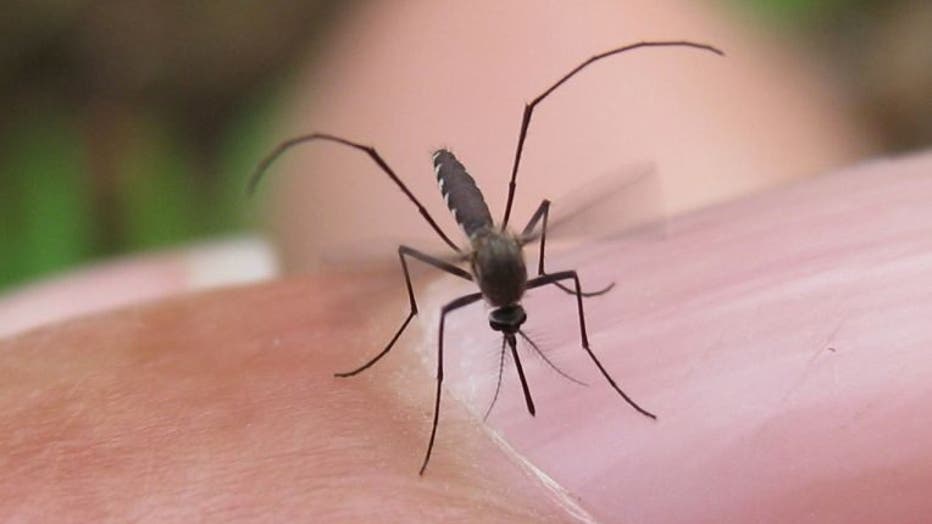First positive West Nile mosquito pool reported in Travis County
AUSTIN, Texas - Austin Public Health says it has identified the first positive mosquito pool for West Nile virus in Travis County.
APH discovered the pool in the 78721 zip code in East Austin as part of its routine monitoring for mosquito-borne diseases.
Although no human cases of West Nile Virus have been identified at this time, APH says the positive mosquito pool indicates the virus is in the Travis County community.
In 2021, there were eight positive mosquito pools in Travis County and 1,515 positive pools across the state of Texas, and 77 confirmed West Nile virus cases.

Austin Public Health says it has identified the first positive mosquito pool for West Nile virus in Travis County.
What can I do to prevent West Nile virus?
APH recommends residents know the dangers of West Nile and to "fight the bite" with the Four D's:
- Drain standing water: Mosquitoes breed in standing water and need as little as one teaspoon. Emptying water that accumulates in toys, tires, trash cans, buckets, clogged rain gutters, and plant pots will deny mosquitoes a place to lay their eggs and reproduce.
- Dawn to Dusk: Although different species of mosquitoes are active at different times of day, the Culex mosquito that spreads West Nile Virus is most active between dusk and dawn.
- Dress: Wear pants and long sleeves when you are outside. Wear light-colored, loose-fitting clothing; mosquito repellent clothing is also available.
- DEET: Apply insect repellant: Use an EPA-registered repellant such as those containing DEET, picaridin, IR3535, oil of lemon eucalyptus, para-menthane-diol or 2-undecanone. Apply on both exposed skin and clothing.
How is West Nile virus spread?
West Nile virus is the most common mosquito-borne disease in the United States and it is typically spread to people by the bite of an infected mosquito. Mosquitos become infected when they feed on infected birds, says the CDC.
According to the CDC, in a very small number of cases, West Nile virus has been spread through:
- Exposure in a laboratory setting
- Blood transfusion and organ transplant
- Mother to baby, during pregnancy, delivery, or breastfeeding
West Nile virus is not spread:
- Through coughing, sneezing, or touching
- By touching live animals
- From handling live or dead infected birds. Avoid bare-handed contact when handling any dead animal. If you are disposing of a dead bird, use gloves or double plastic bags to place the carcass in a garbage can.
- Through eating infected animals, including birds. Always follow instructions for fully cooking meat.
What are the symptoms of West Nile virus?
Most people (about 8 out of 10) infected with West Nile virus do not develop any symptoms, according to the CDC.
About 1 in 5 who are infected develop a fever with other symptoms such as headache, body aches, joint pains, vomiting, diarrhea, or rash, says the CDC. Most people with febrile illness due to West Nile virus recover completely, but fatigue and weakness can last for weeks or months.
About 1 in 150 who are infected can develop a severe illness affecting the central nervous system such as encephalitis (inflammation of the brain) or meningitis (inflammation of the membranes that surround the brain and spinal cord), says the CDC.
- Symptoms of severe illness include high fever, headache, neck stiffness, stupor, disorientation, coma, tremors, convulsions, muscle weakness, vision loss, numbness and paralysis.
- Severe illness can occur in people of any age; however, people over 60 years of age are at greater risk for severe illness if they are infected (1 in 50 people). People with certain medical conditions, such as cancer, diabetes, hypertension, kidney disease, and people who have received organ transplants, are also at greater risk.
- Recovery from severe illness might take several weeks or months. Some effects to the central nervous system might be permanent.
- About 1 out of 10 people who develop severe illness affecting the central nervous system die.
Mosquitoes are present in Central Texas year-round, says APH, but the population is largest and most active from May through November. During this period, the APH Environmental Vector Control Unit monitors the mosquito population.

